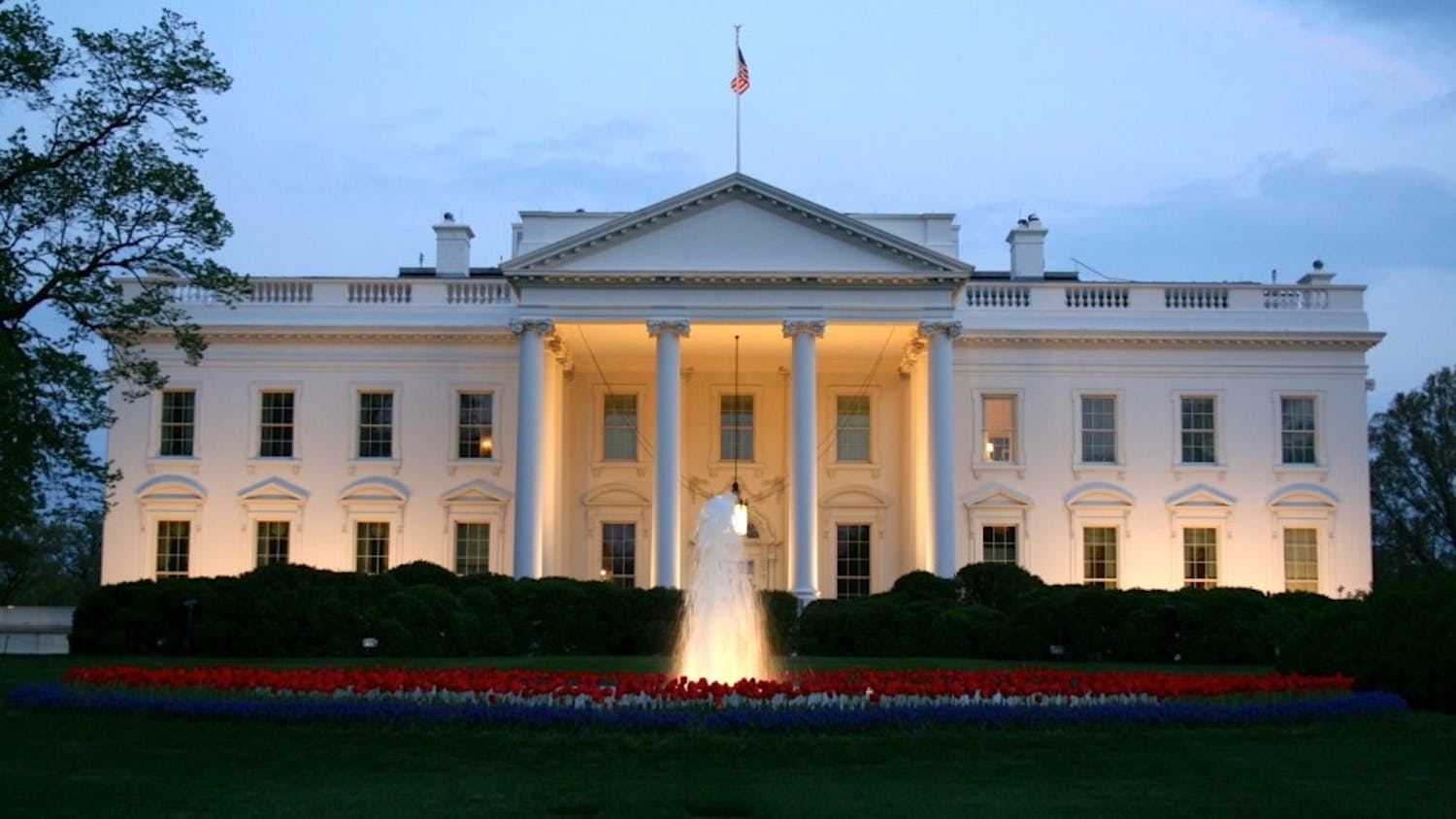The image of a Middle Eastern woman covered by a burkha may conjure up strong feelings for Western feminists. During the Taliban regime however, there was more public outrage over the group's destruction of Buddhist statues than over their harsh treatment of women, said AU professor Catherine Warrick at a panel discussion Monday night.
"Why is a woman in a burkha so shocking after September 11?" she. "The women in burkhas were there before September 11."
Warrick's comments came during a panel titled "Women in the Middle East" which brought together Middle Eastern women and experts on the region to discuss advances women are making there.
Warrick said people who want to promote Western civilization as superior of ten sterotype Middle Eastern women. These stereotypes are not just images, but carry significant political weight.
"They are a rationalization for interference and intervention," she said. "We have to ask whose interest it serves to perpetuate the stereotypes of this region."
Other panelists agreed that stereotypes are one of the biggest problems facing Middle Eastern women today.
The Middle East is not a homogenous place, said AU professor Mary Ann Fay. The circumstances of women's lives there differ by country and are influenced by many other factors.
"You can go down the Gulf, meet a privileged woman with money from oil who might want improved divorce laws, while Iraqi women are just trying to survive day to day," Fay said.
It would be as much of a said generalization to ask what the biggest problem is facing American women, Rouane Itani, a Lebanese woman and communication consultant based in Washington.
The idea that there is only one type of Middle Eastern women is a major Western misconception about women and the treatment of women there, said an audience member.
When asked to describe their stereotypes of the typical Middle Eastern woman, Brandeis student Daniel Horwitz told the panel "I picture a woman kept down by her husband, wearing a hijab, with somewhere between 10 and 12 children."
Although that is one view of Middle Eastern women, there are a wide variety of lifestyles and opportunities for women in the region.
"If we are just going to have one stereotypical image, why that one?," said Warrick.
Itani called it ignorant, racist and wrong to form stereotypes about what the culture, religion and ethnicity are all about.
"Being an Arab from the region, I find it very disheartening when people from the U.S. quickly judge Arab women's rights," she said. She noted that the region spans two continents and "is not like the 50 states."
"These are separate countries with their own language, history and heritage," Itani said. Even country distinctions are not always accurate categories for women in the region.
"A lot of borders were artificially drawn after colonization," Itani said. Opportunities may also vary within countries according to social class. Family status, social background and whether a woman lives in an urban or rural area are all factors.
"Differences in opportunities for women are partly about gender but very largely about wealth," said Warrick. "Some women are very restricted and some have as many opportunities as the people in this room."
Itani pointed out that while Saudi Arabia has considerable oil wealth, and can offer free health care and education, some countries in the area are very poor.
"We should remember that not all Middle Eastern countries are sitting on seas of oil," she said.
Dr. Elana Yaron, an Israeli scholar, described the army and kibbutzim as big equalizers for women in her country. They allow people to be judged by how well they work instead of their family's status.
Another theme of the conference was Western versus Middle Eastern views on the hijab, the headscarf worn by Muslim women.
"I have friends there that find the hijab empowering and some who find it oppressive," Warrick said. "I know college women whose mothers threw off the hijab but who now have adopted it
again."
A woman's decision concerning the hijab may be based on where she lives. Currently, Saudi Arabia and Iran have laws enforcing hijab. In other countries the decision may be influenced by a woman's family or religion, or she may be making a political statement. Many religious women wear the hijab, said Atani. But often it is very politicized, rather than being just a symbol of religion.
"It gets mixed up; people think religion is the same as culture," she said.
Warrick agreed, adding that are many women just following the norms for their society.
"When I teach a class, I can guarantee that every woman in the class will be wearing a shirt," she said. "That doesn't make it a political statement."
Another topic covered by the panel was the effect of extremist groups like Hamas and Hezbollah on women rights.
There are groups with extremist ideologies for women, but there is also the phenomenon of women Islamists because of their view of society and their belief that this is the path to social justice, Warrick said. There are different ideas of what it means to be equal, which vary depending on who is being asked and how they view feminism and women's
rights.
"For some women, the path to feminism is through religion," Itani said.
However, the panelists agreed that holding women as the standard bearers for tradition and religious purity objectifies women and is not a practice unique to the Middle East.
The idea of women as symbols of cultural standards gets a lot of play in politics, but the situation is not static, Warrack said.
"It's not a story that will never change," she said. "And it changes because of the things people do."
The panel was co-sponsored by Women's Initiative, AU Students for Israel, and Students for Justice in Palestine. The panel was moderated by sophomore Stacia Young from Women's Initiative.




